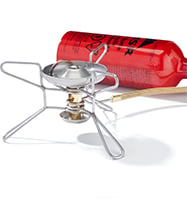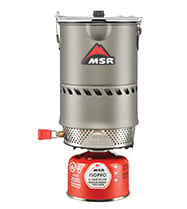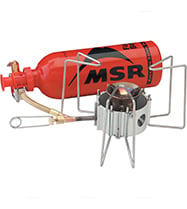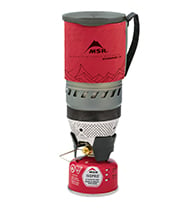Canister Stoves vs. Liquid Fuel Backpacking Stoves – Which is Right for You?
The question of canister stoves vs. liquid fuel stoves, each with their own pros and cons, mostly comes down to the trips you’re planning and your personal preference. Canister stoves have significant advantages in some situations and new, more efficient designs have made the performance differences less distinct than they once were. Liquid fuel stoves remain the leaders on long trips, winter conditions and travel where canisters may not be available. They are also an excellent choice for emergency preparedness kits thanks to their exceptional field maintainability, legendary durability and in some cases, multi-fuel compatibility.
Let’s take a closer look at canister stoves vs. liquid fuel backpacking stoves to help you determine which is right for you.
Canister Stoves vs. Liquid Fuel Backpacking Stoves—Specs to Consider
Depending on what’s most important to you, we’ve laid out seven specifications to consider when choosing between and canister and liquid fuel backpacking stove:
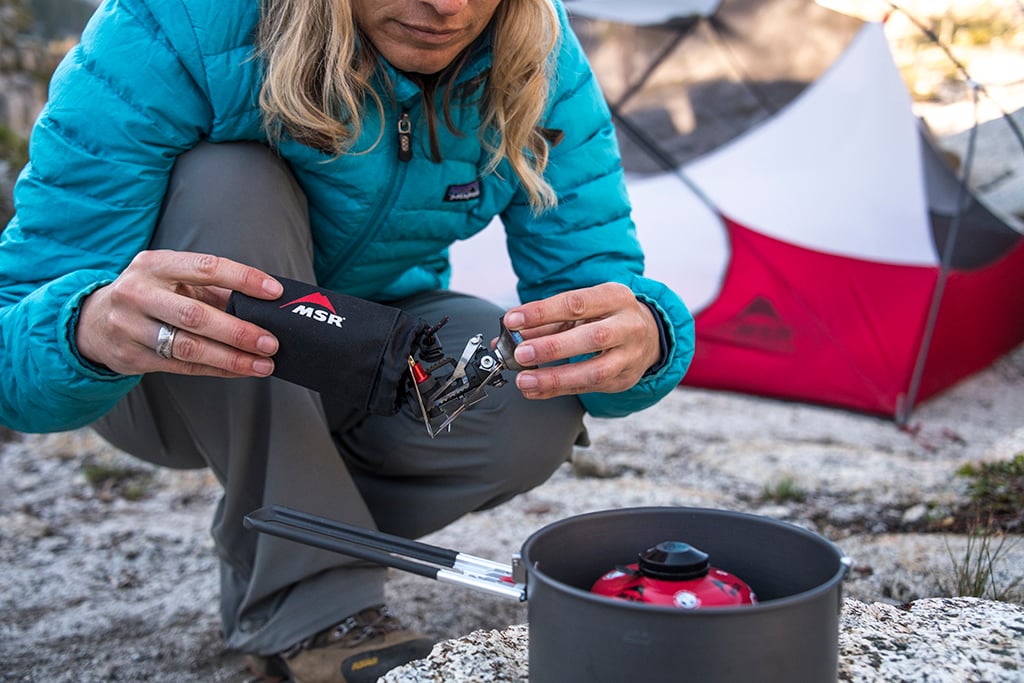
1. Stove Weight: Canister Stoves
Canister stoves are the clear winner in this category—they’re almost always lighter and more compact than their liquid fuel counterparts. Comparing just the weight of the stoves themselves, the numbers are easy to compare and they’re often the determining factor in a purchase decision. However, it’s important to remember that these numbers don’t tell the whole story when it comes to the total weight you’ll carry in the field, including fuel and containers.
2. Fuel Weight: It Depends
This is where the weight comparison gets interesting. A single fuel canister weighs less than a liquid fuel bottle, but a bunch of canisters can add up to significantly more weight than a liquid fuel bottle. On a short trip that only requires a little cooking, the canister is king. If you’re on a long trip or planning to run the stove a lot, carrying a large bottle of liquid fuel is the best way to go. The weight you save versus canister fuel ends up offsetting the lighter weight of the canister stove as well. Obviously, we’re talking about two very distinct scenarios, and there are a lot of trips that fall in between. Consider the number of times you plan on cooking, the conditions and your personal fuel usage habits. Also, remember that you’ll have to carry canisters for the remainder of your trip—even after they’re spent.
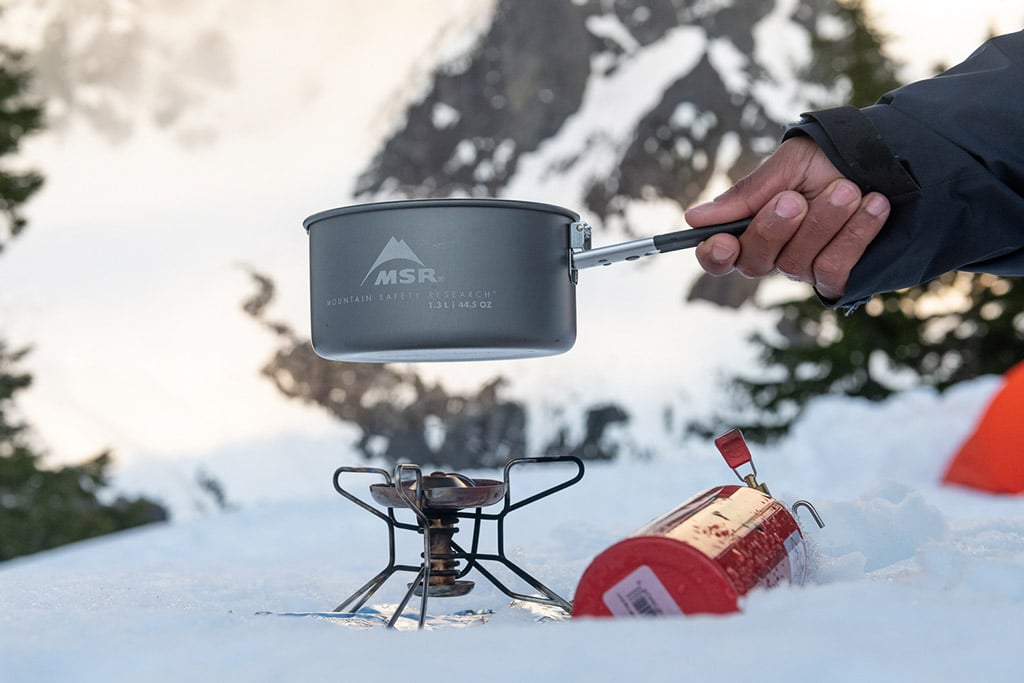
3. Cold Temperatures: Liquid Fuel Stoves
In most cases, liquid fuel stoves offer the best performance in cold conditions. In fact, the first remote burner liquid fuel stove, the MSR Model 9, was designed for mountaineers who needed a reliable stove at altitude.
Cold temperatures create low canister pressure, rendering most canister stoves useless in really cold conditions. Some climbers are able to use them in cold, high places by carefully managing the temperature of the canister, but these stoves still face a huge challenge. Pressure-regulated canister stoves, like the MSR Reactor®, offer better performance in these conditions with basic temperature management of the canister than canister stoves lacking a pressure regulator (here’s why).
4. Environmental Impact: Liquid Fuel Stoves
There’s no question about it: liquid fuels require less energy input and offer a more environmentally friendly way to cook in the outdoors. The key is the reusable fuel bottle.
Spent fuel canisters can be recycled as mixed metal (not aluminum) but not that many recycling programs take these metals, and even fewer recognize the canisters and process them. MSR’s Fuel Canister Recycling Program is now collecting empty canisters at our Repair Shop in Seattle. Bring in any brand of backpacking fuel canister and we’ll ensure it’s properly recycled for you.
5. Maintenance: Canister Stoves
Canister stoves are as low-maintenance as you’ll ever want. They require practically zero maintenance to run reliably for decades. Liquid stoves are also famous for their reliability but require more maintenance.
Depending on the conditions and the fuel you use, you might find yourself performing maintenance every couple of years or a couple of times per year. Luckily, the stoves are easy to work on and the cleaning process is simple.
6. Economy: It Depends
In most cases, canister stoves cost less than liquid fuel stoves. At the same time, canister fuel often costs considerably more than liquid fuel. For reference, one hour of cooking time on a canister fuel stove will cost you about $6.00, while an hour of cooking time on white gas is closer to $1.50 and other liquid fuels may be even less. If you’re going to use your stove a lot, the low operating cost of liquid fuel is the only way to go. Most professional guide services and outdoor programs use liquid fuel stoves exclusively. If you only use your stove on shorter trips a few times a year, canister fuel will be reasonable.
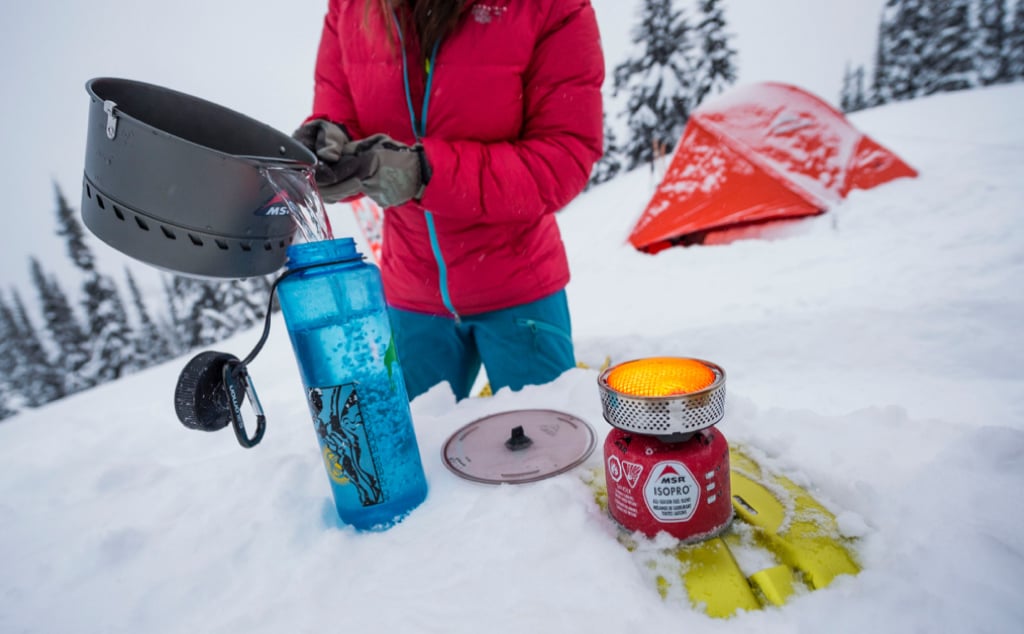
7. Fuel Availability: It Depends
Canister fuel is available in a wide range of places, but it’s not everywhere. If you’re planning on traveling in countries and regions well off the beaten path, liquid fuel is a safer bet. No matter where you are you’ll be able to find fuel for a liquid fuel stove such as the XGK™ or WhisperLite® International.
You can expect to find canister fuel in the following regions:
- North America
- Patagonia
- Himalayas
- Pakistan
- Europe
- South Africa
As you can see, the choice between a canister stove and a liquid fuel stove depends a lot on what you’re doing, where you’re going and what you prefer. It isn’t always an easy decision to make, but there are plenty of great options for everyone.
Canister Stoves vs. Liquid Fuel Backpacking Stoves—Scenarios to Consider
These four scenarios illustrate the functional differences between canisters and liquid fuel:
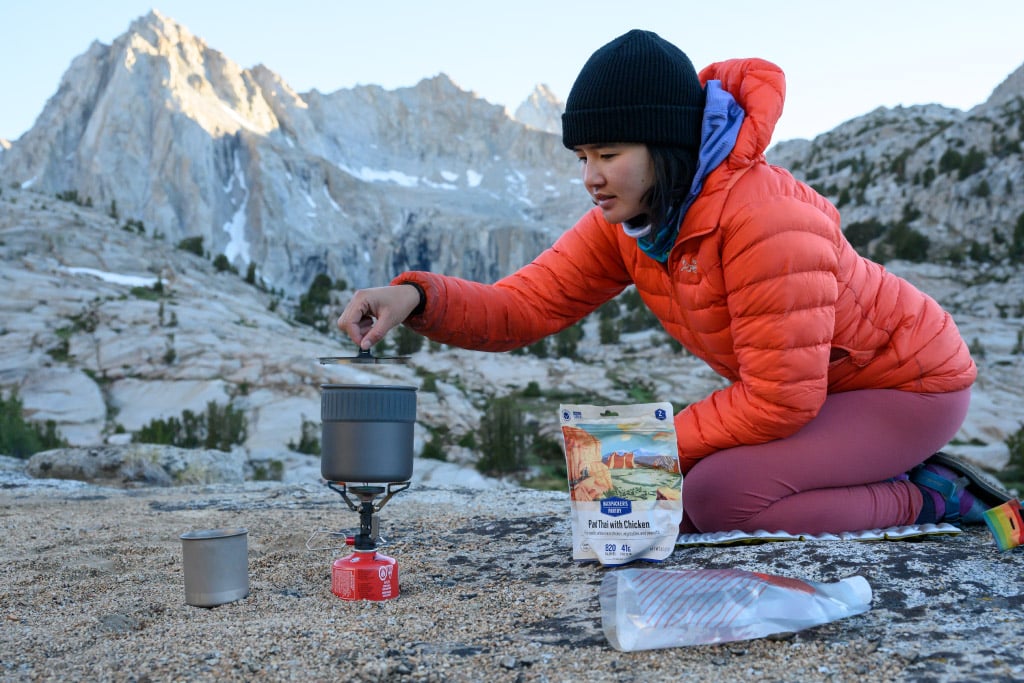
1. Weekend Backpacker: Canister Stove
Your backpacking trips are typically 2 to 3 days in length, and carrying less weight in your pack is a priority. At times your days on the trail run long and you need a stove that makes cooking quick and easy. The temperatures are almost always above freezing and the meals you prepare are usually simple—like freeze-dried dinners, pasta or instant rice.
A canister stove like the PocketRocket® 2 is a great choice for this kind of use. The stove weighs very little, and you’ll only burn one or (maybe) two canisters of fuel on an average trip. The overall weight you carry into the field will be very low, far less than any liquid fuel options. As an added bonus, the stove itself is so compact it will fit in most cook sets.
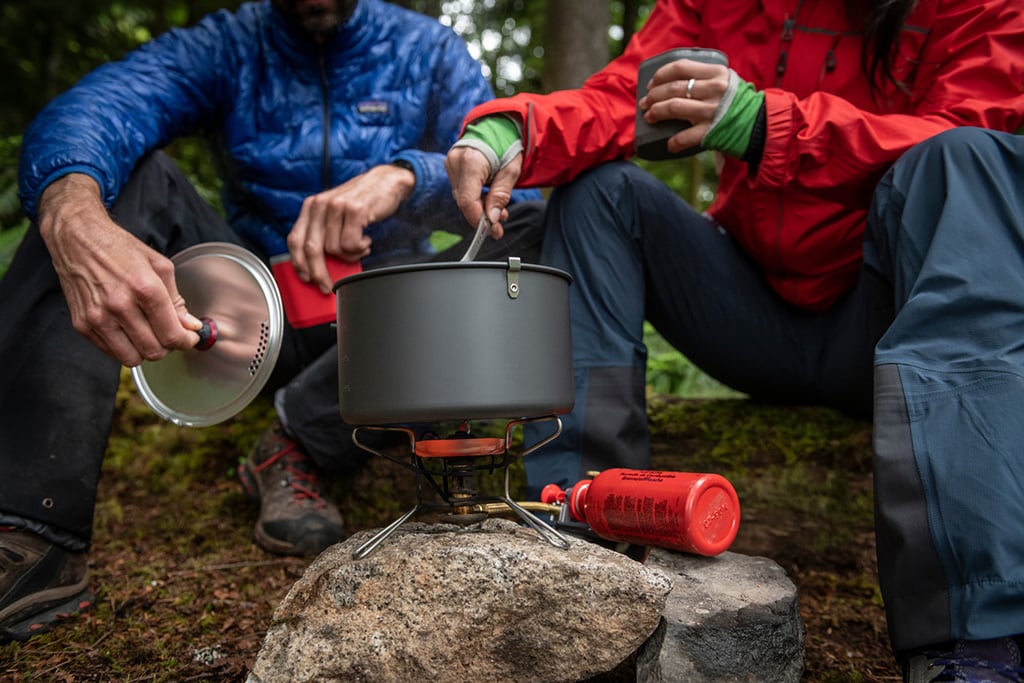
2. Extended Backpacker: Liquid Fuel Stove
You often spend a week or more on the trail without resupply. Reducing pack weight is a priority, but so is being prepared for the duration of the trip. The meals you cook range from simple freeze-dried to more involved multi-step dinners. At times the temperature drops below freezing, and occasionally you find yourself melting snow.
The WhisperLite was designed specifically for this kind of use. Although it is heavier than a canister stove, it offers fuel efficiency that will reduce the total weight you carry on longer trips. These stoves can also be great for larger groups of hikers who want to do more cooking with a single stove. The multi-fuel versions are ideal for traveling in regions where white gas may not be available.
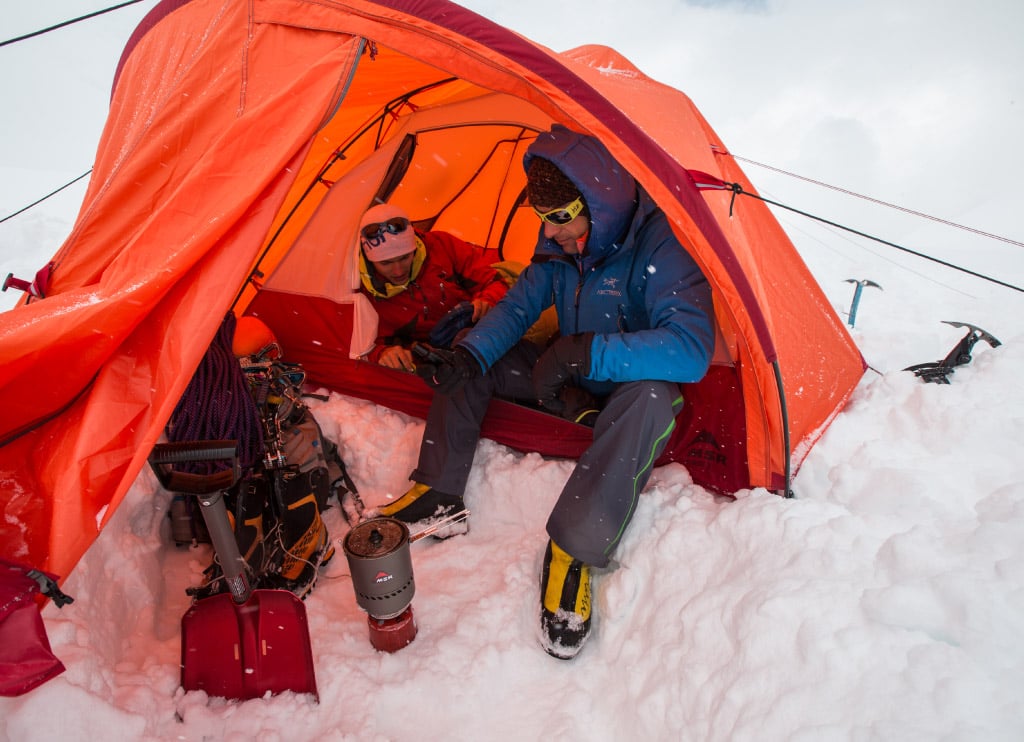
3. Alpine Climber: Canister Stove System
Your trips are short, fast and require good fitness. Carrying a small, lightweight pack is key to your success in the mountains. Temperatures range from summer conditions to just below freezing. When you use a stove you’re melting snow, boiling water and making very simple meals. You’re often cooking in exposed places where wind and cold can affect performance. A stove that is fast, compact and efficient is extremely important.
A stove system like the Reactor is your best choice for this kind of trip. Stove systems are fast, efficient, and very compact. They’re convenient to use and can be set up in a matter of seconds. Most important of all, the Reactor performs very well in windy conditions, so you can count on it even in exposed places and nasty weather.
Stove systems are not as lightweight as conventional canister stoves like the PocketRocket 2, but they offer increased fuel efficiency that saves total weight. On a trip that requires melting snow and cooking in windy places, the weight savings can be significant.
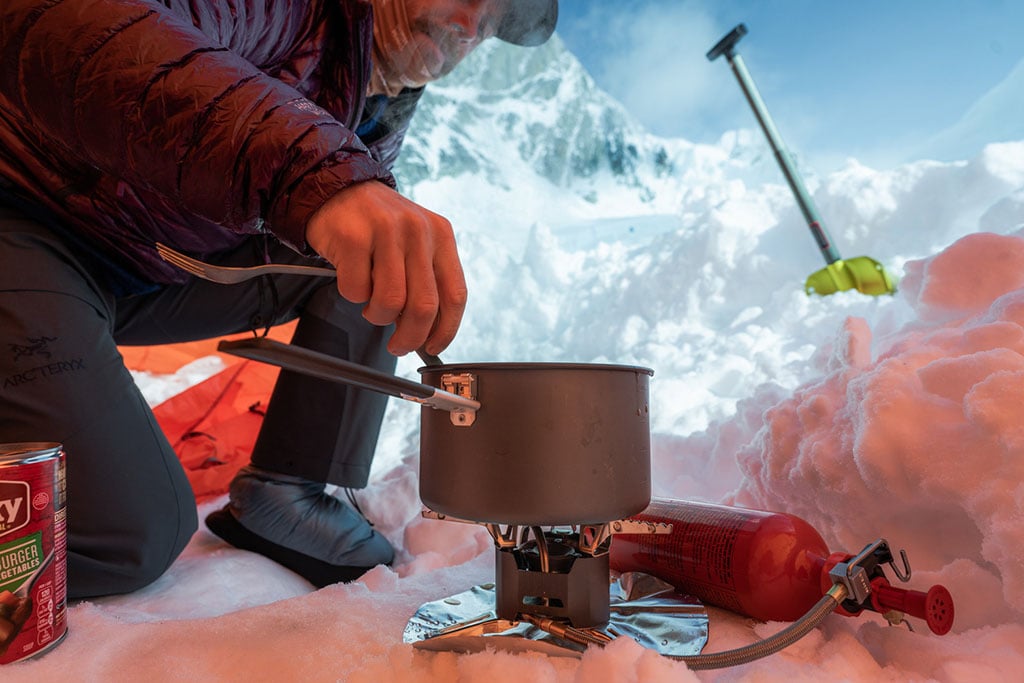
4. Mountaineer: Liquid Fuel Stove
You’re out climbing big mountains and making camp at higher elevations, in cold conditions. These climbs often last more than three days and you usually have three or more climbers on your rope team. Temperatures are regularly below freezing and you are using your stove to make water for the group. You may also be planning expeditions to the greater ranges, or to cold regions like Antarctica.
Liquid fuel stoves like the XGK EX were created to function in these conditions. This stove has the speed and power to melt snow at any altitude and any temperature. Its liquid fuel efficiency makes it a weight-saver over the course of longer trips. Excellent reliability and easy field maintenance allow this stove to continue cranking out water and food on long expeditions. Like many of our liquid fuel stoves, the XGK can run on a variety of fuels, making it an ideal choice for travel to developing countries. These qualities have made the MSR XGK a mainstay for guides and mountaineers heading to Denali, South America and the Himalayas.
Related Posts:
- A Guide to MSR Backpacking Stoves
- Which Stove Should I Bring? | Best Stoves for Any Adventure
- Best Camping Cookware & Stove Pairings
Updated. Originally Published April 2, 2017.

